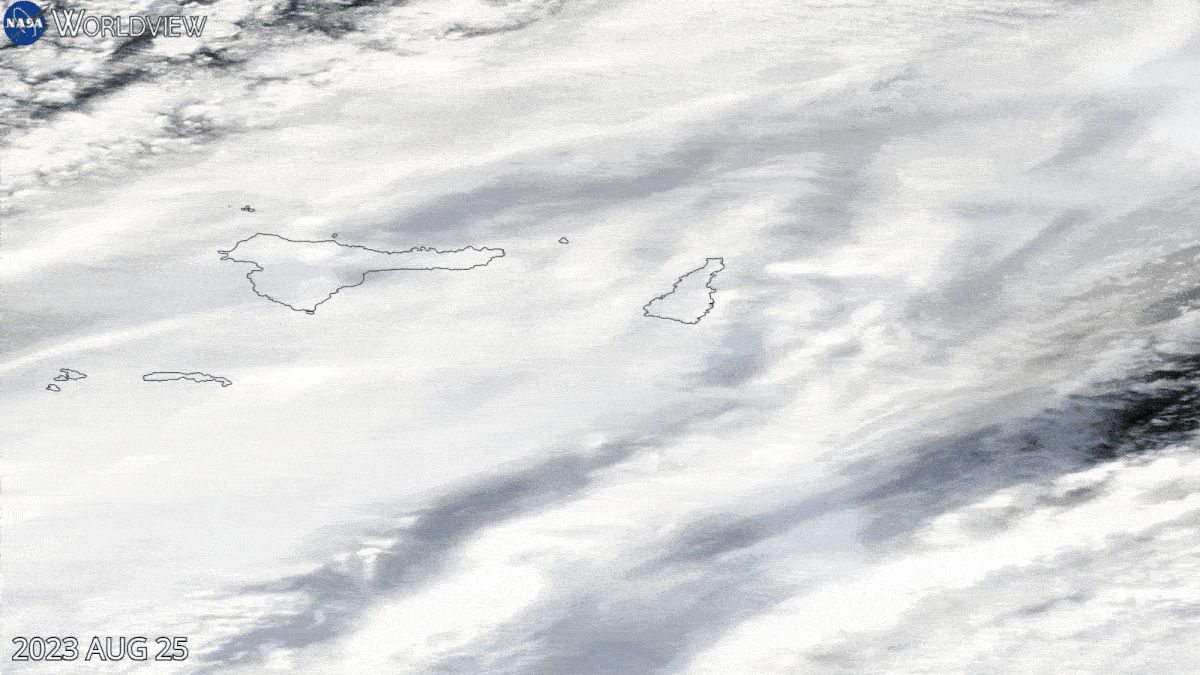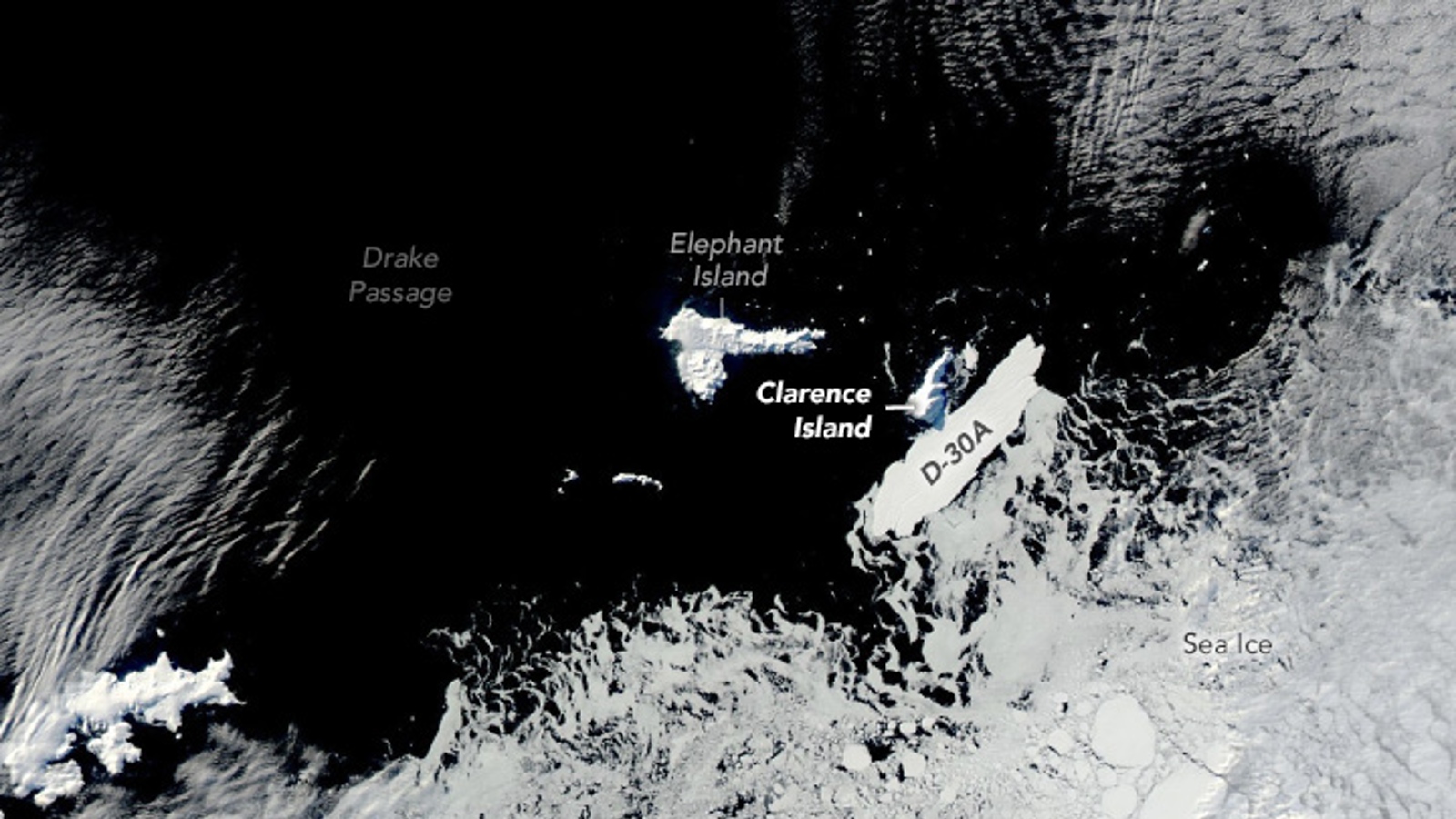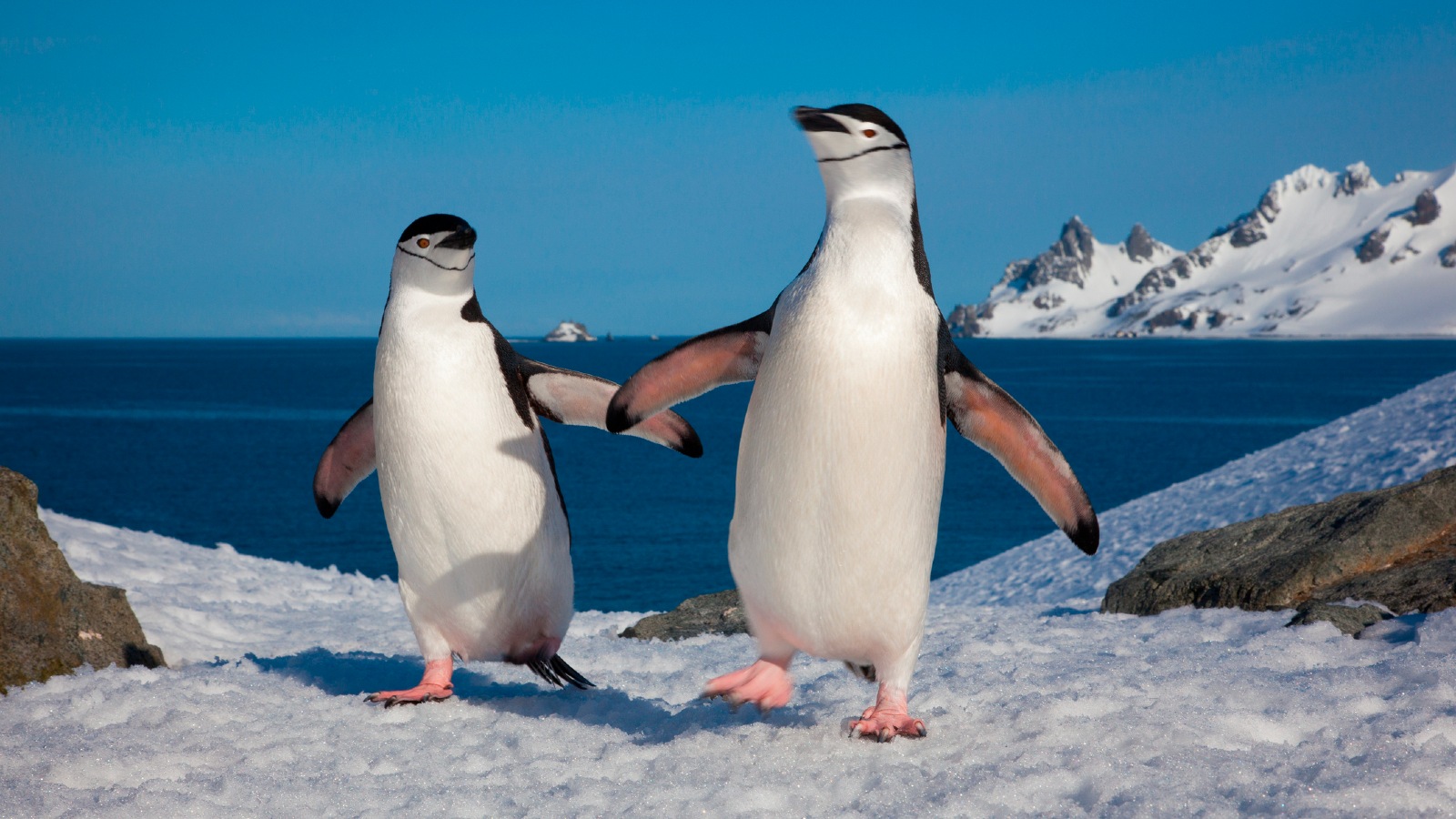45-mile-long iceberg slams into penguin refuge in Antarctica, almost causing ecological disaster
Hefty iceberg D-30A has collided with Clarence Island — an important refuge for breeding penguins in Antarctica. But luckily, the penguins weren't at home when the berg struck.
A massive iceberg around half the size of Rhode Island recently smashed into a penguin refuge in Antarctica, two years after it was birthed from a similar collision. But it seems to have caused minimal damage.
The hefty tabular berg, named D-30A, is around 45 miles (72 kilometers) long and 12.5 miles (20 km) wide. It is the largest remaining piece of D-30, which was birthed in June 2021 when its parent berg D-28 smashed into land near the Borchgrevink Ice Shelf in eastern Antarctica and broke in two. Since then, D-30A has slowly drifted west along the Antarctic coast.
In late 2022, D-30A suddenly changed course and made a beeline for Clarence Island — the easternmost of the South Shetland Islands, which has a surface area around 10 times smaller than D-30A. On Sept. 6, the enormous slab of ice slammed into the island's south coastline before spinning around to the east of the island and heading out to sea several days later, according to NASA's Earth Observatory.
Clarence Island is an important breeding site for chinstrap penguins (Pygoscelis antarcticus), with around 100,000 breeding pairs visiting the island each winter to lay and incubate their eggs. Researchers were concerned that the berg may have impacted this population. However, those fears were soon alleviated.
"The timing was lucky because the chinstraps that breed there had not returned to the colony yet," Heather Lynch, a statistical ecologist at Stony Brook University in New York, said in the statement. If the collision had happened a couple of months later, when the penguins were on the island, it could have been "quite serious," she added.
Related: Massive iceberg narrowly avoided collision with Antarctic ice shelf
Icebergs colliding with islands can be very disruptive for wildlife, especially if the bergs get stuck on the seafloor surrounding the isolated landmasses. The ice can prevent marine animals from heading out to sea to feed and can also alter the temperature and salinity of the surrounding waters. As the ice scrapes across the seafloor, it can also destroy seafloor ecosystems and majorly imbalance the surrounding food web.
Get the world’s most fascinating discoveries delivered straight to your inbox.
In late 2020, alarm bells were raised when the world's largest iceberg at the time, A-68A, appeared to be on a collision course with South Georgia in the South Atlantic Ocean, which is an important penguin and seal refuge . Experts predicted that it would get snagged on the seafloor and potentially stay there for several years. However, at the last minute, the mighty berg veered away and missed the island completely before disintegrating into half a dozen pieces.
Clarence Island's surrounding seafloor may have helped avert a catastrophe due to its deepness, making it less likely that D-30A would get stuck there. "It didn’t 'stick' quite likely because the eastern side of Clarence Island has a pretty sheer drop-off with deep enough water to allow the berg to sail right through," Christopher Shuman, a glaciologist at the University of Maryland and NASA's Cryospheric Sciences Laboratory, said in the statement.
However, even though the berg didn't stick around for long, it could have caused real problems for the penguins had they been nesting on the island. As they incubate their eggs, nesting penguins rely on their partners to hunt for food for them, Lynch said. "While nesting, even a few days of blocked access to the colony might mean a failed breeding year," she noted.
Instead, the close encounter may actually be a good thing for the local wildlife. As D-30A passed the island it likely released iron-rich meltwater that could support increased algal growth in the area, researchers said.
D-30A now appears to be heading into the Drake Passage, nicknamed "iceberg alley," where massive icebergs get caught in ocean currents that drag them into warmer waters to their doom. In November 2022, the world's former largest iceberg, A-76A, was spotted in the same passage before eventually breaking apart around 1,500 miles (2,415 km) further north in June this year.

Harry is a U.K.-based senior staff writer at Live Science. He studied marine biology at the University of Exeter before training to become a journalist. He covers a wide range of topics including space exploration, planetary science, space weather, climate change, animal behavior and paleontology. His recent work on the solar maximum won "best space submission" at the 2024 Aerospace Media Awards and was shortlisted in the "top scoop" category at the NCTJ Awards for Excellence in 2023. He also writes Live Science's weekly Earth from space series.





